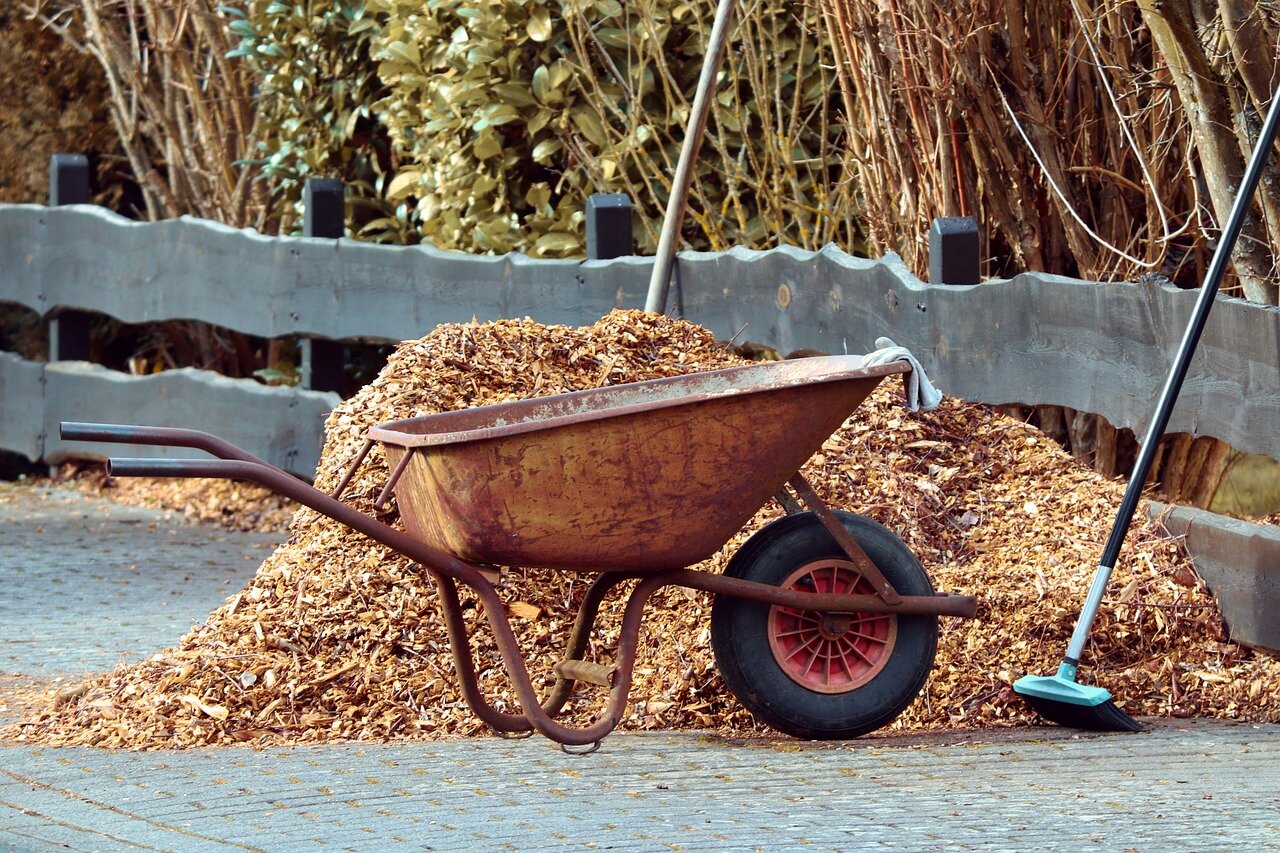The regenerative urban garden II: Sheet mulching
This is the second in a series of posts about regenerative gardening techniques. Read Part I on No-till Gardening here!
If you've heard of permaculture, you've probably heard of sheet mulching. Sometimes it feels like the two are treated almost as synonyms: every Permaculture Design Course must include the initiation rite that involves laying down cardboard as earnestly as if you were trying to cover the entire planet in it.
I’m being a bit sarcastic. Honestly, sheet mulching is hands down one of my favorite methods of garden establishment and soil-building. I've done a lot of it myself, made some mistakes in the process, and almost gotten into trouble for pulling cardboard out of the dumpsters behind big box stores. I think sheet mulching is an essential tool in the toolkit of regenerative gardening. But just to be clear: it's not always the right choice, and it's not bulletproof.
What is Sheet Mulching?
Sheet mulching means laying down layers of organic material, including a weed block layer of some kind (usually cardboard or old newspaper), to smother existing plants and create a blank canvas, if you will, on which to establish a new garden area. Some people call it "lasagna gardening" — the same idea.
Here are the main benefits of sheet mulching: It
acts as a great weed block (if done right), giving you and the plants you choose to plant a competitive edge over weeds
takes materials out of the waste stream (such as newspaper or cardboard) and converts it into garden soil
is a great soil builder! The layers of organic materials gradually break down and get incorporated into the soil. Earthworms and other critters crawl up to munch on them, aerating the soil. The whole process builds the humus layer.
...and that is why sheet mulching is a regenerative and carbon-sequestering gardening practice, especially when combined with cover crops. It provides soil cover; it feeds the diversity of biology in the soil; and it has the potential of turning carbon-rich organic materials like straw or cardboard into the kind of carbon that feeds the living soil.
Since Toby Hemenway has written a killer how-to for sheet mulching, I don't need to go over all the steps here. Instead, I'm going to share the sheet mulching process we've done as part of establishing our urban homestead in the past year, and some lessons learned.
Here's our front yard a few weeks after we moved in in Spring 2018:
Our goal was simply to build soil in this area for a year before planting anything.. Having the blank canvas of the sheet mulch also allowed some design ideas to come forth.
Once the last layer was on, I seeded the entire area with a cover crop mix. And here's what the area looked like about three months later:
In other words, the cover crops took off. They pushed their roots through whatever layers of cardboard remained, pumped lots of nitrogen into the soil, and grew flowers that attracted pollinators. The Nitro radish in Sow True Seed's cover crop mix busted through the compacted soil with its thick tubers and such vigor that it drew many remarks from neighbors and passers-by.
The one challenge, I'd say, with using a cover crop mix with multiple plant species in it is that it became challenging to monitor for the weeds that inevitably did push their way through the cracks of the cardboard layer. By the fall, I was happy with how the cover crop was working the soil, but also finding a lot of pernicious vines and weeds.
For that reason, we scythed it all down in the fall, and in the spring, we did it all over again.
This time, we used thinner rolls of brown paper instead of cardboard, laid out pathways with wood chips to create the teardrop shape for this future mini forest garden, and started planting perennials. I'm really happy we did two rounds of sheet mulching, even though it was a lot of work. Now when I put my hand into that soil, I see a new dark brown layer over the lighter, clayey original soil, and the soil's got great texture and fluff to it. That's what we're going for.
Sheet mulching recommendations:
Do smaller areas at a time. It's a lot of work, wheelbarrowing all that organic material, and you'll tire yourself out if you try to do too much at once.
If using cardboard, find the biggest pieces of cardboard you possibly can. Bike shops, kayak and canoe shops, furniture and home appliance stores usually have huge boxes in their dumpsters they don't mind you hauling away.
An alternative to cardboard are rolls of brown paper (sold in the painting section at Lowe's or Home Depot, for example). You'll want to do at least two layers, but don't need to spend time pulling out tape and staples from cardboard.
Make it a work party! Sheet mulching is overwhelming if done with too few pairs of hands, but a riot if you invite your friends.
Water the soil well before starting, and keep watering the weed block layer as you go. The soil-building organisms that will be munching on your sheet mulch cake need moisture to do their thing.
If cover-cropping, a single species cover crop seed might be a good idea, for reasons explained above
Plant any large perennials first and sheet mulch around them, rather than trying to cut into the cardboard and then dig a planting hole.





